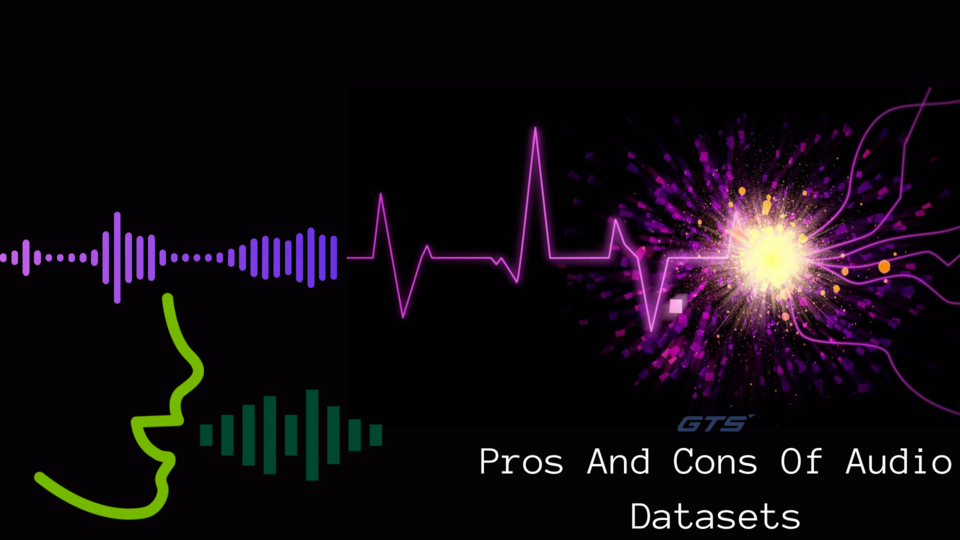
The importance of data in our digitally-driven world is now becoming increasingly crucial. Data is essential to forecast business needs as well as weather forecasting, or even to train artificial computers. Machine learning technologies utilize high-quality training and testing data to develop their models.
Siri as well as Alexa are two popular examples of voice or speech recognition software. There is the need for improvements when it comes to these methods. Companies attempt to work with particular requirements since it is very unlikely that they will obtain a dataset with all the training data. This is accomplished through leveraging information about speech from different sources.
AI developers require massive chunks of carefully crafted data for them to "teach" the program to take autonomous decisions. It's not surprising that this is a daunting job - in order to create software that can take over routine tasks, humans have to perform an enormous amount of tasks that are repetitive!
AI developers depend on a variety of ways for accessing data to aid in machines learning. One of the most promising avenues is via companies that provide data annotation. In this blog we will review the situation in the field of the data annotation industry and examine how companies that provide data annotation perform against other solutions for training data for Speech Transcription to support AI research.
What is the reason for Data Annotation Services?
Smart AI has numerous applications in the real world including self-driving cars, forecasting the weather medical diagnostics, intelligent assistants and web search optimization navigation, and many more. In every scenario humans make their choices based on information they receive.
The input could be text, images or text fragments. Since childhood, we're trained to recognize and "label" the inputs we receive to find the best solutions. AI software doesn't have this kind of knowledge and experience.
What exactly is Remote Speech Data Collection?
Data collection from remote voice is the method of acquiring data from different sources and then processing it to produce data sets to support Conversational AI. It's also referred to in the field of recording audio. The data collected from a remote location is then compiled by using a mobile application or web browser.
In general, for this procedure there is a predetermined number of participants are enrolled online according to their language proficiency and the demographic profile. They are then asked to record their speech samples of different situations, stories or situations. In this way data sets are constructed in the event of a need the data sets are utilized in different scenarios.
Although the process of annotation of data can be automated to achieve the highest precision, you'll need human beings to be able to label the most number of images, text or videos as they can.
Certain data sets may be noted by people with basic qualifications. They can include everyday objects like fruits and pet animals, fragments of text relating to everyday conversations and so on.
However, in a variety of scenarios such as medical diagnostics, the person who is annotating should be able to demonstrate experience in the subject.
Data annotation services work with various types of data. Audio files, images as well as video files are typically processed by highly skilled data annotation experts. This includes sub-fields such as the annotation of videos image segmentation semantic segmentation, text annotation as well as named entity recognition.
Service providers utilize techniques such as neural technology for processing language (NLP) or computer vision process raw data to create customized machine learning models. Data scientists utilize the high-quality training data to create advanced AI algorithms.
Pros and Pros and Sampling?
Like all other technologies that collects Audio Datasets remotely, this one also has its benefits and drawbacks. Let's look them in the following paragraphs:
Pros: Here's a list benefits of speech data collection
1. cost-effective solution: Collecting informationremotely via applications is cheaper than meeting in person.
2. Highly CustomizableThe training data is customizable and altered according to the precise specifications for training data.
3. Greater Capacity:Crowdsource workers can collect data within their infrastructures that allows for greater capacity and flexibility, as well as the option to increase the size of the project.
4. The Ownership of the Datathe ownership of data is in your hands.
5. Variety of Speech Data:You can gather different data sets like commands, scenario-based, and unscripted speech.
Pros: There's few disadvantages to collecting speech data:
1. Multiple Audio Specifications for various users.The most difficult part of this process is to make the data homogeneous. Because different people utilize different recording devices or tools to record their voice You will get all sorts of output data.
2. limited background scenario optionsThe recording of speech will not give the best outcomes when you require specific background scenarios within your data. In these cases you'll need employ an individual voice artist in person to perform the necessary.
The importance of curating Data
When it comes to annotated and edited data sets used for machine learning, both quantity and quality are equally crucial. Insufficient quality of the training data sets could significantly hinder the AI's ability to make appropriate and accurate decisions later on.
Based on the job in hand, the repercussions can be different. For chatbots and online search, low quality data could cause a poor customer experience. This could make your customers switch to companies that provide "smarter" information.
However, in other circumstances it could affect the health and well-being of humans. Autonomous cars are the best illustration of this. In the event that the databases aren't correctly curated, autonomous vehicle AI might make mistakes which can lead to fatal accidents.
In an age where there is an increasing skepticism about the development of AI developers are keenly aware of the dangers of using data that is not properly annotated. Making a mistake here is not an alternative. This is the reason special data annotation firms such as GTS are essential in the present market.
How can you maintain quality while Crowdsourcing?
To ensure the integrity of the information gathered To ensure the accuracy of data, it is crucial to employ various crowdsourcing methods. The methods include:
1. Crisp & Clear Guidelines: It is important to give clear guidelines for the people with whom you collect information. Only when they are fully aware of the process and what their contribution will be beneficial will they be able to give their best. Provide images, screenshots, as well as short videos to help them aware of the demands.
2. Recruitment of a Diverse Set of people: If you want to collect wealth of data, hiring individuals with different origins is most important thing. Look up people in different segments of the market and age groups, ethnicities as well as economic backgrounds and much more. These will assist you in assembling the right data for Video Transcription in 2022.
3. Validate Data through machines: The validation methods where machines learn models analyze the information to create a report in a more detailed manner. They can verify the necessary elements of the data required, like audio quality, format, etc.















